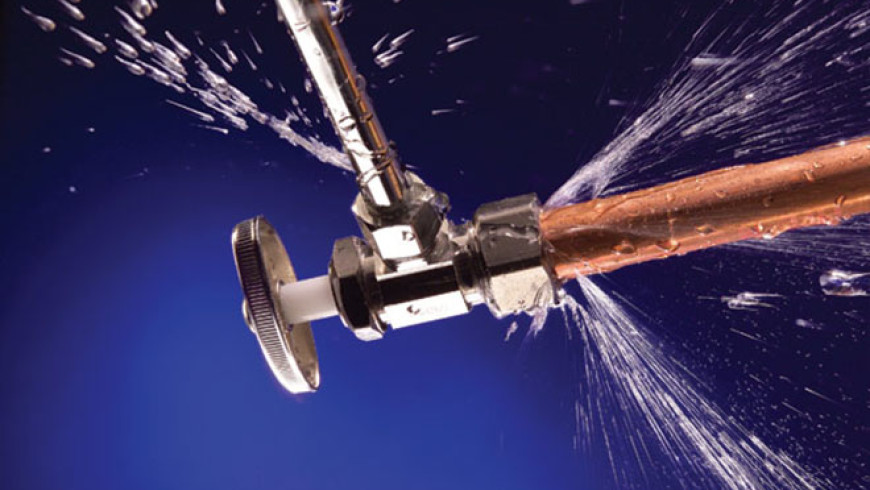Unveiling the Key Culprits Behind Home Water Leak Problems
Unveiling the Key Culprits Behind Home Water Leak Problems
Blog Article
Just about every person seems to have their unique opinion in relation to Top Causes of Home Water Leaks.

Leaks not just create waste of water yet can also create unnecessary damages to your home as well as advertise unwanted organic development. Water leakages might go unnoticed given that most of the pipework in our residence is hidden. By recognizing and looking for day-to-day scenarios that create leakages, you can secure your residence from future leakages as well as unnecessary damage. Today, we will consider 6 leakage triggers that may be causing your pipelines to trickle.
Intruding roots
Many water leaks start outside your home as opposed to inside it. If you notice an abrupt decrease in water stress, say in your tap, take some time to go out as well as examine your lawn. You may observe wet patches or sinkholes in your yard, and that might mean that tree roots are invading water lines causing water to seep out. You can have your plumber look for invasion, particularly if you have trees or shrubs near your residential or commercial property.
Rusty water systems
This may be the reason of discoloration or warping on your water pipes. If our plumbing system is old, think about changing the pipes considering that they are at a greater risk of rust than the more recent designs.
Defective Pipe Joints
The point at which your pipelines attach is frequently the weakest link in the waterline. Pipe joints can wear away over time, causing water leaks. Sadly, the majority of pipe joints are not conveniently visible. If you have loud pipelines that make ticking or banging noises, specifically when the hot water is activated, your pipe joints are most likely under a great deal of pressure. It is a good idea to have your plumber inspect your system yearly.
Immediate temperature level adjustments.
Extreme temperature changes in our pipelines can create them to expand and also acquire all of a sudden. This growth and also contraction may create splits in the pipes, particularly if the temperature level are below freezing. It would be best if you watched on just how your plumbing functions. The existence of the previously pointed out conditions regularly shows a high threat.
Poor Water Connectors
At times, a leak can be created by loose tubes as well as pipes that supply your home appliances. In situation of a water links leakage, you might discover water running straight from the supply line or pools around your devices.
Obstructed Drains
Clogged drains pipes might be bothersome and also inconveniencing, but they can occasionally end up causing an overflow leading to break pipes. Keep eliminating any type of products that might go down your drains pipes that can block them to stay clear of such troubles.
All the above are root causes of leakages yet not all water leaks arise from plumbing leaks; some leakages could originate from roofing leakages. All leakages must be fixed promptly to prevent water damage.
Leakages not just trigger waste of water but can additionally trigger unnecessary damages to your home and also advertise unwanted organic growth. By recognizing and looking for daily circumstances that trigger leakages, you can safeguard your residence from future leaks as well as unneeded damages. Today, we will look at six leakage causes that may be triggering your pipelines to drip.
At times, a leak can be triggered by loosened hoses and pipes that supply your devices. In instance of a water links leakage, you might notice water running directly from the supply line or puddles around your appliances.
How To Check For Water Leak In Your Home
How To Check for Leaks
The average household's leaks can account for nearly 10,000 gallons of water wasted every year and ten percent of homes have leaks that waste 90 gallons or more per day. Common types of leaks found in the home are worn toilet flappers, dripping faucets, and other leaking valves. These types of leaks are often easy to fix, requiring only a few tools and hardware that can pay for themselves in water savings. Fixing easily corrected household water leaks can save homeowners about 10 percent on their water bills.
To check for leaks in your home, you first need to determine whether you're wasting water and then identify the source of the leak. Here are some tips for finding leaks:
Take a look at your water usage during a colder month, such as January or February. If a family of four exceeds 12,000 gallons per month, there are serious leaks.
Check your water meter before and after a two-hour period when no water is being used. If the meter changes at all, you probably have a leak.
Identify toilet leaks by placing a drop of food coloring in the toilet tank. If any color shows up in the bowl after 10 minutes, you have a leak. (Be sure to flush immediately after the experiment to avoid staining the tank.)
Examine faucet gaskets and pipe fittings for any water on the outside of the pipe to check for surface leaks.
Undetected water leaks can happen without the home or business owner even realizing. If you suspect a water leak, but not able to find the source. It is time to contact a professional water leak detection service, The Leak Doctor.
How To Find a Water Leak In Your Home
https://www.leakdoctor.com/blog/How-To-Check-For-Water-Leak-In-Your-Home_AE197.html

We were shown that report about Top Causes of Home Water Leaks from a good friend on another web blog. Do you know about another individual who is inquisitive about the subject? Please feel free to promote it. Thank-you for taking the time to read it.
Fix today, not tomorrow! Report this page